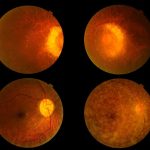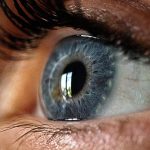There’s only a couple of weeks left in 2019, which means you only have a handful of days remaining to spend your Flex Spending Account (FSA) funds before they’re forfeited back to your employer. That’s right: It’s a “Use it or Lose it” situation with FSA dollars. If you don’t use them on approved healthcare expenses before December 31, you’ll likely lose them.
Don’t let your employer take back your hard-earned dollars just because you forgot to use them! If you’re looking for smart strategies for using a FSA balance, here are nine ways you can use it to proactively take care of your eye health and ensure you have good vision as we start the year 2020!
How to use your Flex Spending Account funds
It’s easy to spend your FSA balance before the end of the year! Here are nine qualifying expenses you can use those Flex Dollars on before they’re gone:
- Schedule Your Comprehensive Eye Exam
Even with vision insurance, you likely pay for part of your annual visit to the eye doctor. If you haven’t had your comprehensive eye exam in 2019, call us to schedule today. You can use the remainder of your Flex Spending funds for the portion of your visit that insurance may not cover.
- Stock up on Contact Lenses
Avoid the annoyance of running out of daily contact lenses during a busy workweek or just before a long-awaited vacation by stocking up now on a year’s supply of lenses. When you order in bulk and pay with your Flex funds, you’ll prevent that potential issue in 2020.
- A Second (or Third) Pair of Prescription Glasses
Keeping up with one pair of glasses can be difficult in our hectic lives, so having a spare pair can help in a multitude of situations. You can leave a pair at work, so you’re never without them in the office. If your kids toggle between two homes and tend to forget their glasses at the most inconvenient times, maybe having an extra pair would come in handy. Or perhaps you just want to treat yourself to that stylish new frame you saw in our optical department the last time you were here. A second pair is a smart strategy!
- Computer Glasses
Computer Vision Syndrome is a result of the large amount of screen time our population experiences every day. Our eyes weren’t built to stare for long hours at small text on ever-smaller screens. This behavior causes eye strain, eye fatigue, headaches, and a high incidence of nearsightedness in younger and younger people. If you or your loved ones are experiencing these symptoms, a pair of prescription glasses that optimize your vision for the distance range where screens are viewed can help to ease the strain and fatigue you—and your loved ones—are experiencing.
- Prescription Sunglasses
The reason we call them sunglasses instead of “summer glasses” is that the sun’s damaging UV rays are raining down on our planet 365 days a year—even when it’s cloudy and even when the days are short like they are in wintertime. The cumulative UV ray damage that adds up over the years can cause a wide range of eye problems, including the formation of cataracts, macular degeneration and cancer on the eyelids and the skin surrounding the eyes. Prevent these conditions by wearing sunglasses that block 100% of the damaging UV rays the sun emits every day of the year!
- Contact Lens Solutions and Cases
If you wear contact lenses, you know that cleaning solutions are a necessary part of keeping your lenses clean and comfortable. Contact lens solutions are on the approved list of Flex Spending Account items, so if you have extra funds, why not stock up this month?
- Prescription and Over-the-Counter Eye Drops
Whether you have a specific condition such as dry eye or glaucoma, or you have allergies that require over-the-counter or prescription eye drops, now’s a great time to stock up on the drops that keep your eyes healthy and your vision comfortable.
- LASIK Eye Surgery
If you’ve been dreaming of waking up in the morning and not needing to reach for your glasses to see the alarm clock, LASIK eye surgery may be the solution for you! Vision correction procedures, including LASIK, are an eligible FSA expense that can correct vision issues including presbyopia (difficulty focusing on close objects) and myopia (difficulty focusing on faraway objects). While you may not have time in 2019 for your optometrist to determine whether you are an ideal candidate for the LASIK procedure, you can plan ahead for 2020.
- Dry Eye Disease Treatments
If you’ve experienced the dry, itchy, gritty symptoms of Dry Eye Disease, you realize how uncomfortable it can be when left untreated. Treatments for Dry Eye Disease are FSA-approved expenses. These include prescription medications and eye drops to reduce eyelid and corneal inflammation, lubricating eye drops, tear duct punctal plugs, tear-stimulating medications and drops, and procedures including meibomian gland expression or LipoFlow.






